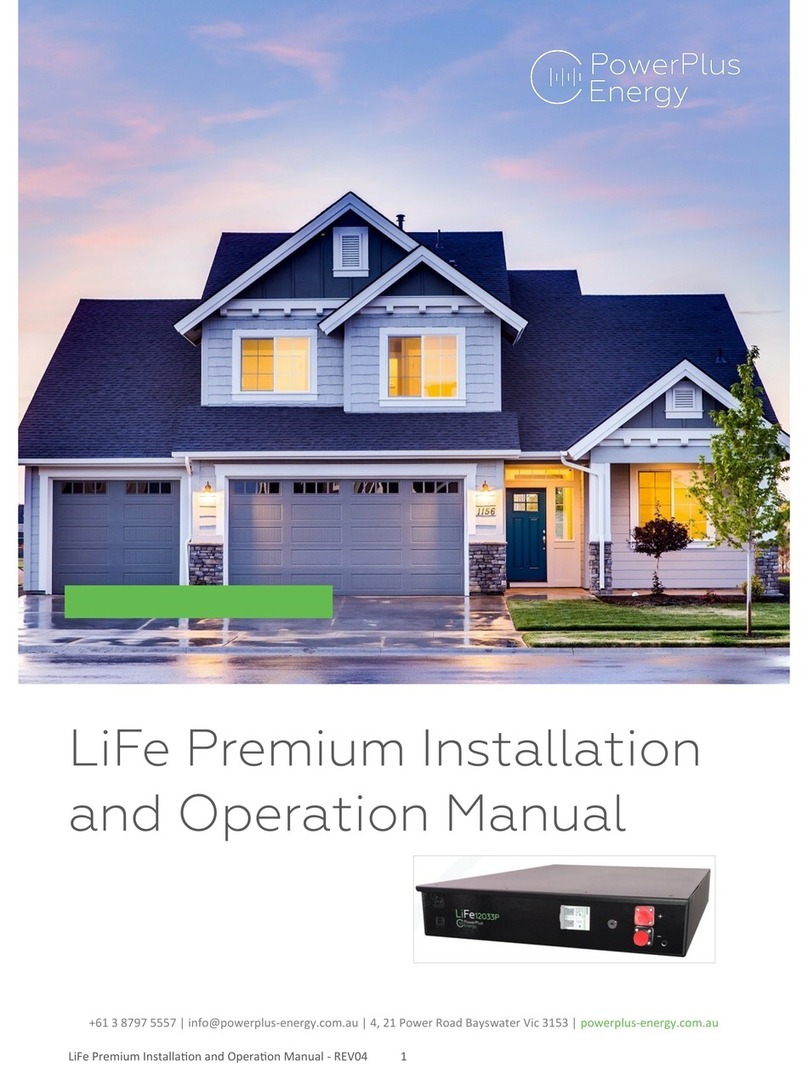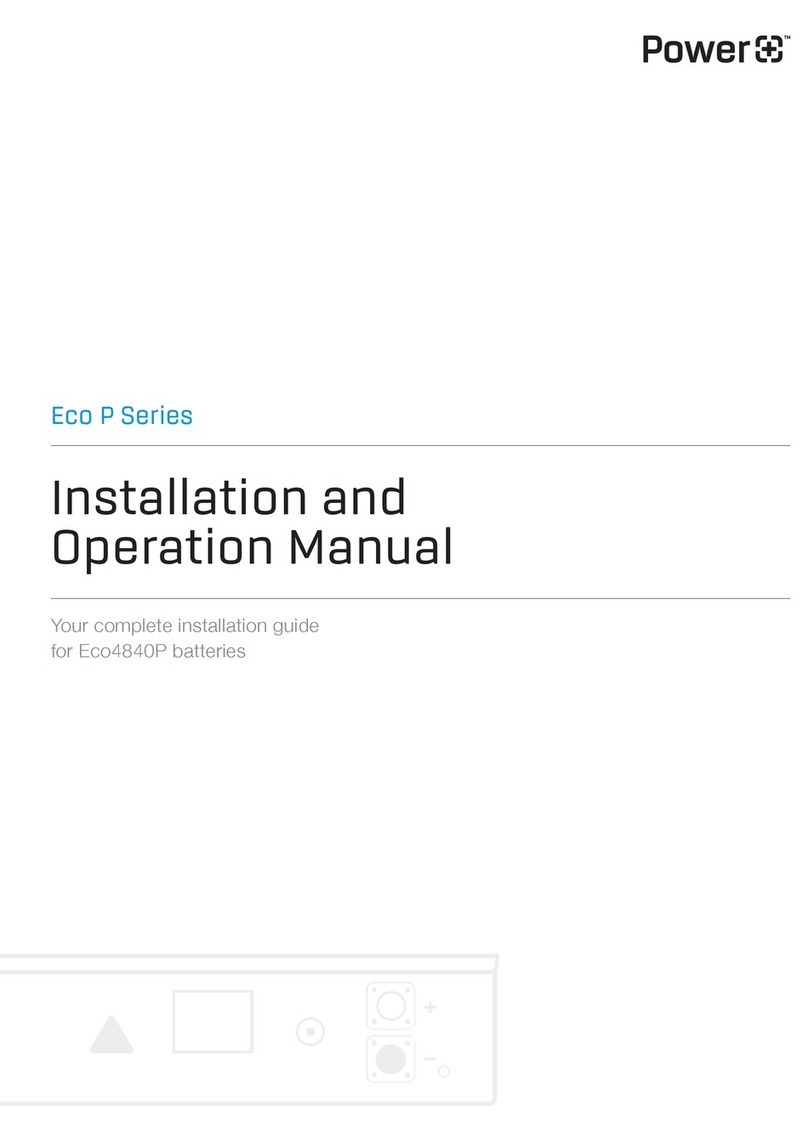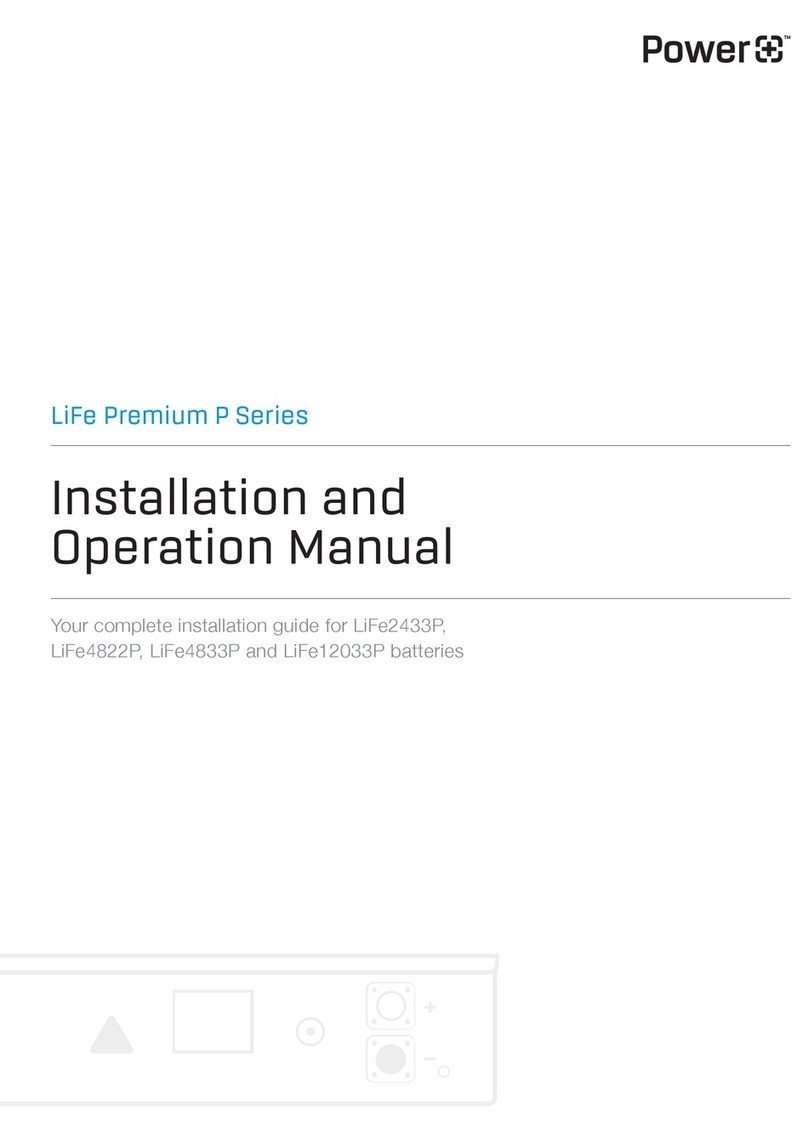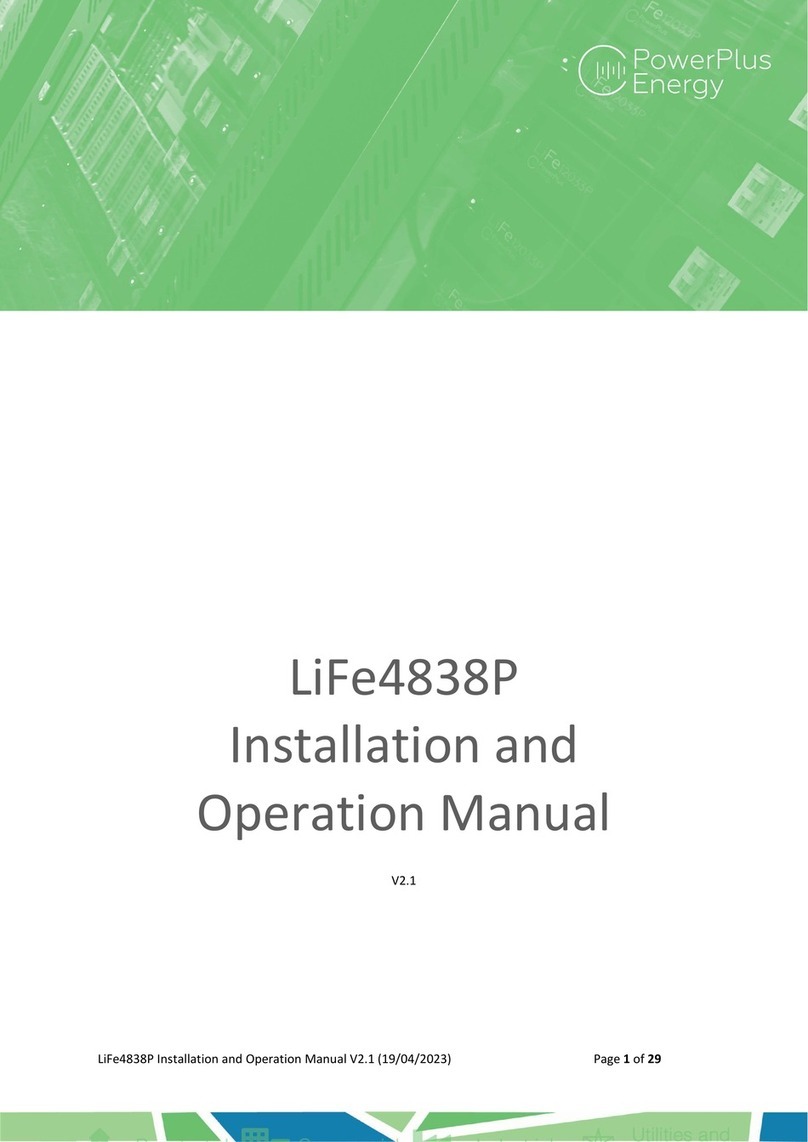1. Introduction 2
2. Safety 5
2.1. Transportation 5
2.2. Basic Safety 6
2.3. Handling 6
2.4. Storage of Battery 6
2.5. LiFe Support 6
2.6. Damaged Battery 7
2.7. Fire 7
2.8. Qualified Person (Installer) 7
3. Product Information 8
3.1. Weight and Dimensions 8
3.2. Inclusions 8
3.3. Specifications 9
3.3.1. LiFe Premium P Series 9
3.4. Charging and Discharging 10
3.4.1. Primary Charging Source 10
3.4.2. Secondary Charging Source 10
3.4.3. Calibration to 100% 10
3.4.4. Battery Charging Requirements PCE for P Series 11
3.4.5. Charging Curves P Series 12
3.4.6. Discharging Curves P Series 13
3.4.7. State of Charge Vs Discharge Voltage P Series 14
3.4.8. Over Discharged battery 14
3.4.9. Circuit Breaker Characteristic 15
4. Installation 16
4.1. Location and Environment 16
4.1.1. Extreme Humidity Climates 16
4.2. Battery Installation 17
4.2.1. Custom Cabinets 17
4.2.2. Battery Orientation Stationary Application 18
4.2.3. Battery Orientation Pre-Assembled BESS or BS Systems 18
4.2.4. Battery Orientation Motorhomes, RV’s, Trailers, Vehicles, Trucks, Buses or Similar 18
4.3. Battery Connections 19
4.4. Main DC Connections 19
4.5. Case Earthing 20
4.6. Battery Alarm and Communication Installation 21
4.6.1. Data Logging 22
4.6.2. PowerLink 22
4.6.3. PowerLink Installation 22
5. PowerPlus Energy Battery Enclosures 23
5.1. Rack Series Enclosures 23
5.1.1. Rack Series Specification 23
5.1.2. Rack Series Enclosure Installation 24
5.2. SlimLine Series Enclosures 25
5.2.1. SlimLine Series Specification 25
5.2.2. PEW3 & PEW4 Installation 26
5.3.3. PEF6W-250B Installation 27
5.3.4. PEF9W-250 Installation 28
6. Battery Operation 29
6.1. Main Status LED 29
6.2. BMS Status LED 29
6.3. Battery Power up / Shut Down Procedure 30
6.3.1. Battery Startup 30
6.3.2. Battery Shut Down 31
6.3. Full Recharge Upon First Installation 32
6.4. Calibration to 100% (Weekly recharge to 100%) 32
6.5. SoC (State of Charge) Drift 32
7. Troubleshooting 33
7.1. Over Discharged Battery Recovery 33
7.1.2. BMS Threshold Soft Shutdown 33
7.1.3. Soft Shutdown Recovery 33
7.1.3. BMS Threshold Hard Shutdown 34
7.1.4. Hard Shutdown Recovery 34
8. Maintenance 35
9. Upgrading Battery Capacity 35
10. Capacity Testing Battery 36
11. End of Life 37
12. Warranty 37



































